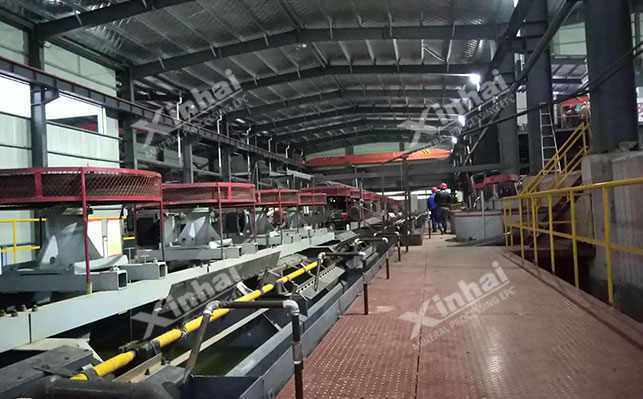If you want to know more information (such as product/process price, etc.), please contact us 24-hour telephone
The design of a graphite flotation plant directly impacts production efficiency, product quality, and operational costs. How can complex processes balance technical specifications, environmental requirements, and economic benefits? Based on industry practices, here are ten core design points to help enterprises construct high-return modern graphite flotation plants.
1.Multi-Stage Grinding and Flotation Collaboration
Graphite ores need to undergo a process of "coarse grinding - coarse flotation - re-grinding - fine flotation" to gradually increase the fixed carbon content. Research shows that using three-stage grinding can increase concentrate grade by 15-20%, while particle size monitoring is necessary to prevent over-grinding and protect large flake graphite integrity (large flake products can have a premium of over 30%).
2.Scientific Configuration of Reagent Systems
When using non-polar oils like coal oil or diesel as collectors, the pH should be adjusted to 8-9 based on ore properties. A case study shows that using a composite modifier (sodium silicate + sodium carbonate) can increase concentrate recovery by 5.8 percentage points. It is recommended to determine the optimal reagent system through laboratory closed-circuit tests.

1.Innovative Grinding Equipment Combination
Recommended configuration: "rod mill + ball mill." Rod mills are used for coarse grinding to protect flake structure, while ball mills are used for fine grinding to enhance monomer liberation. A project with an annual output of 50,000 tons used a Φ3.2×4.5m ball mill, reducing energy consumption by 18% while increasing production capacity by 22%.
2.Flotation System Upgrade Plan
Mechanically agitated flotation machines perform well in the roughing stage, while flotation columns are recommended for the cleaning stage. A factory that adopted a microbubble generator increased the recovery rate of +100 mesh flake graphite by 12%. For dewatering, a combination of "high-efficiency thickeners + plate-and-frame filter presses" is suggested to control moisture content below 8%.
Establish a DCS distributed control system to achieve:
Reagent Addition Precision: ±2% (reducing human error by 80%).
Automatic Adjustment of Grinding Concentration: Fluctuation range ≤0.5%.
Real-Time Energy Efficiency Monitoring: Single-ton energy consumption reduced by 15-20%.
A smart transformation project installed an online particle size analyzer, stabilizing the grinding qualification rate above 92%.
Three-Waste Treatment Technology Route
Wastewater: Coagulation sedimentation + activated carbon adsorption process, COD removal rate >90%.
Tailings: Using paste storage technology, increasing storage capacity utilization by 40%.
Dust: Bag dust removal + wet electrostatic dust removal combination, emission concentration <10 mg/m³.
A project converted tailings into building materials, generating additional revenue of over 3 million yuan annually.
Adopting Permanent Magnet Motors: Reduces grinding machine energy consumption by 23-25%.
Waste Heat Recovery System: Meets 60% of the plant's heating needs.
Water Circulation Utilization Rate: Should reach above 85%.
An EPC project optimized processes to save over 2 million yuan in electricity costs annually.
Professional design teams can provide:
3D Modeling for Accurate Calculation of Equipment Layout Space Utilization.
CFD Simulation for Optimization of Flotation Tank Fluid Dynamics.
Standardized Operation Manuals and Customized Training Systems.
A collaborative case study showed that using the EPCM model shortened the construction period by 30% and reduced the fault rate during commissioning by 45%.
With the application of smart sensors and big data analysis, modern graphite flotation plant design has entered a new stage of "process optimization + digital twins + green manufacturing." Choosing partners with both mineral processing expertise and EPCM implementation experience will be crucial for project success.